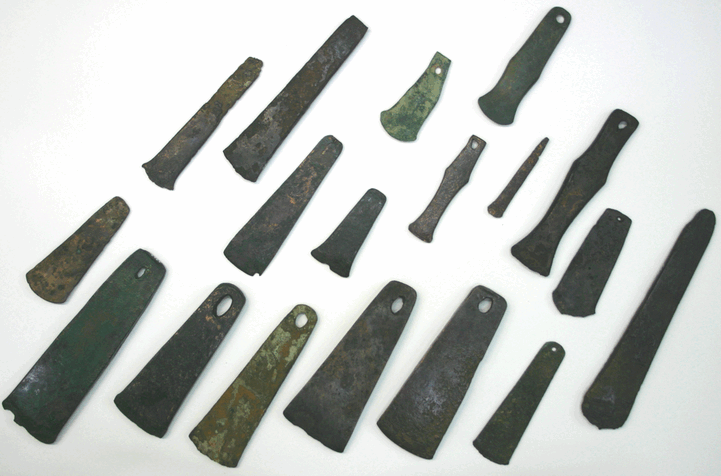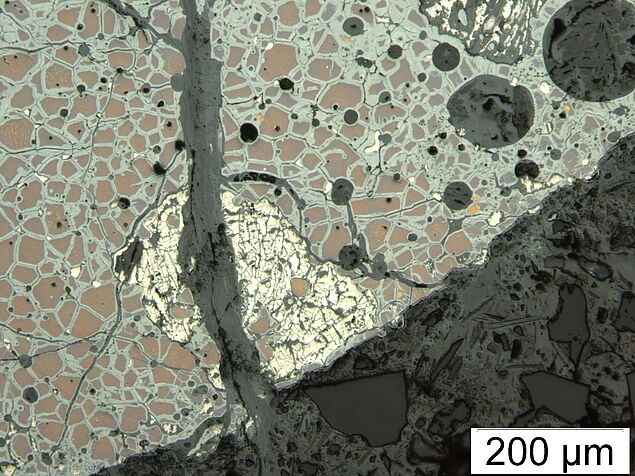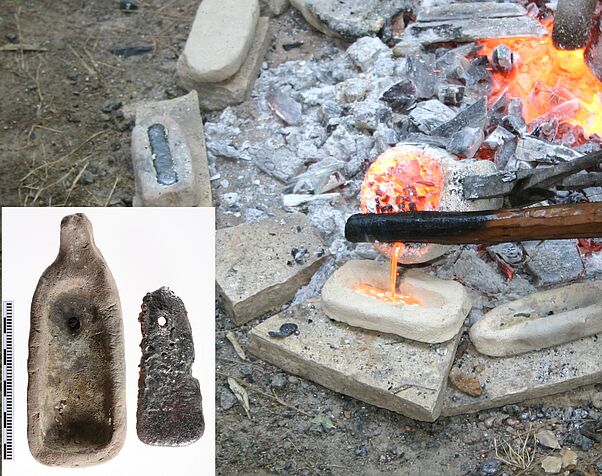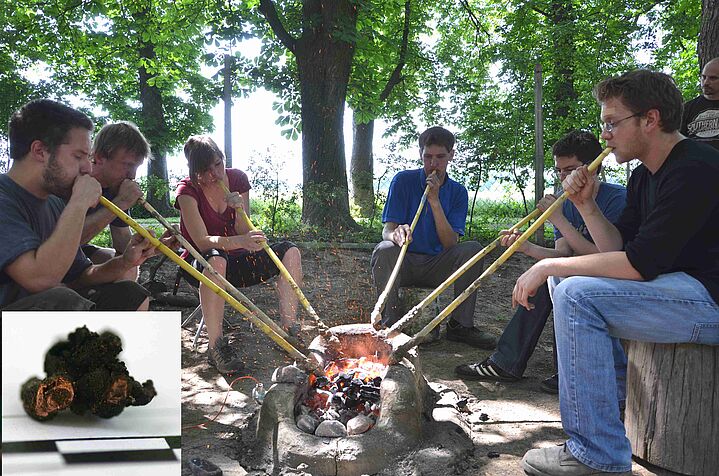Beginnings of metallurgy in Western Anatolia - Archaeometallurgical research on Çukuriçi Höyük
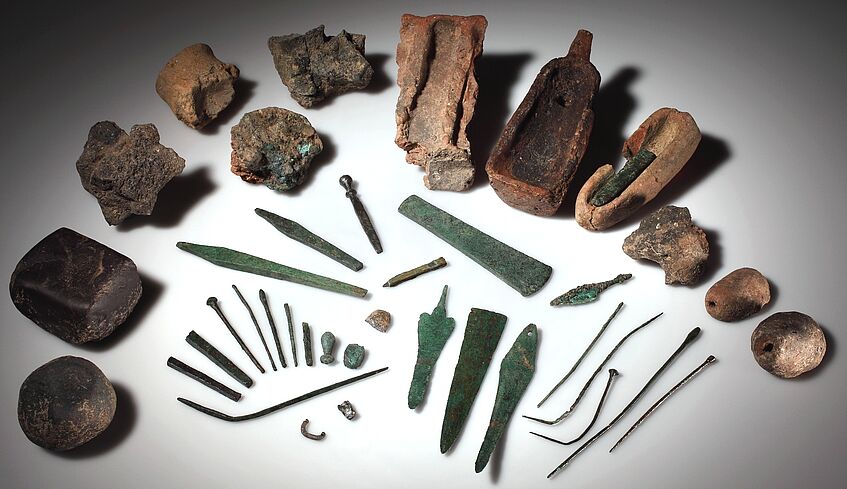
In the metal workshops of the Tell an extensive metallurgical ensemble has been found, which includes crucibles, blowpipe nozzles, molds, semi-finished and finished products and more (Photo: B. Horejs, ERC-Prehistoric Anatolia, N. Gail)
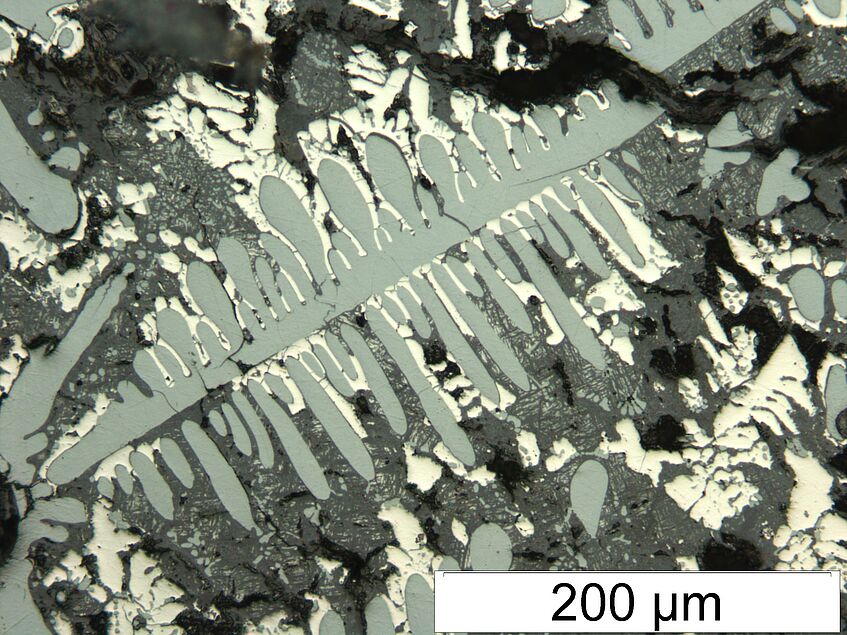
Cross-section of a matte-speiss fragment. Copper iron sulphides (gray) are solidified in dendritic form and surrounded by iron arsenides (light yellow). (Photo: M. Mehofer)
As part of the research on Tell Çukuriçi Höyük, Western Turkey, a settlement dating to the Early Bronze Age 1 was excavated. This settlement site has been investigated in recent years as part of an ERC Starting Grant (headed by Dr. B. Horejs, OREA, ÖAW, see detailed info in the info box). Through several years of excavations, it was possible for the first time to gain a deep insight into the "chaîne opératoire" of a metalworking and production place dating to the first half of the 3rd millennium B.C.. Comprehensive metallurgical ensembles were found in the exposed rooms and buildings, suggesting that intensive metal processing was taking place at these areas.
Numerous crucible fragments, ten nozzles inserts for blowpipes or even a comparatively large number of three rod-ingot molds show that the metal was not only processed, but also collected and remelted into size-standardised ingots for further trading. Noteworthy is also the large amount of 137 metal objects (including daggers and flat axes) found. In both phases of the settlement, flat-bowl-shaped and horseshoe-shaped ovens for melting the metal were discovered, which compare well with ovens unearthed in Norşuntepe. Of the 51 excavated ovens, 26 were located in the center of the Tell, where the most intense metallurgical activities were observed. The metal production was designed not only to produce objects for local needs, but also to feed into inter-regional exchange networks. The investigation of these metallurgical residues, which can be subsumed under the term "crucible metallurgy", made it possible to describe almost all production stages of arsenic copper objects.
SEM image of a copper arsenide inclusion, light gray = copper arsenide, dark gray = copper sulphides, white = lead inclusions, dark black = slag matrix. (Photo: M. Mehofer)
Metallurgical Analyses
A found matte-speiss fragment can be addressed as a result of a complex pyrometallurgical process, the aim of which was to produce arsenic copper. In principle, there are several possibilities: first of all, "co-smelting", where arsenic copper is produced with a random or intentional mixture of different arsenic and copper ores. This process is discussed for example for Tappeh Sialk, İkiztepe and Murgul. The second option would be to add arsenic-containing material, for instance in form of arsenopyrite or of speiss, to the molten copper. The preliminary analysis suggests that the discussed fragment was formed as part of a co-smelting process.
In addition, numerous metal inclusions with very high arsenic concentrations (18-20% by weight) as well as other intermetallic phases were found in the slagged inner surfaces of various crucibles. This remarkable high proportion of arsenic, in combination with the results of the previously described matte-speiss fragment, suggests that arsenic copper was also produced on the tell.
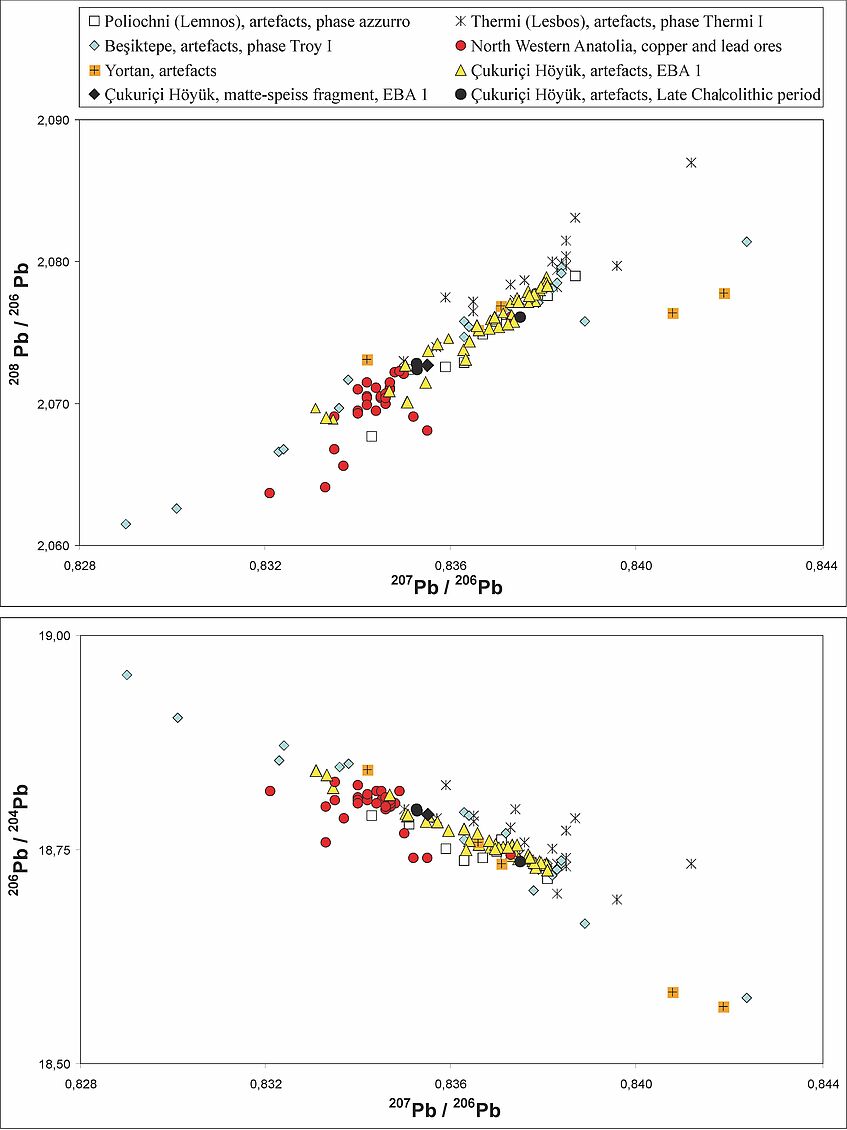
The diagram shows the results of the lead isotope analysis to determine the origin of the arson copper used. (Photo: M. Mehofer)
These observations make it possible to identify Çukuriçi Höyük as the first site with proven arsenic copper production in Western Anatolia. The metallurgical techniques that can be reconstructed on the site show that the arsenic copper was produced in crucibles and then further processed. The found cast remains, semi-finished products and finished products additionally prove this intensive metal processing. However, this was not limited to the production of end products, as also rod-ingots were produced. This function of the tell as "gateway", which was certainly not limited to the exchange of metals, but also the passing on of metallurgical knowledge and techniques, is further underlined by the found bronze objects. The fact that we have both arsenic copper production and bronze processing remains at the same site will provide extensive information on the transition from arsenic copper technology to bronze technology in the future.
To the project homepage (OREA, ÖAW): Prehistoric Anatolia
Literature
Mehofer, M., Archaeometallurgical research at the tell Çukuriçi Höyük/Western Turkey, Archaeometric and experimental investigations of an Early Bronze Age metal workshop (Abstract), Metalla 4, Bochum 2011, 51–52.
Mehofer, M., Die Anfänge der Metallurgie in Westkleinasien. Spätchalkolithische und frühbronzezeitliche Metallverarbeitung auf dem Çukuriçi Höyük, Oriental and European Archaeology (Vienna, in preparation).

